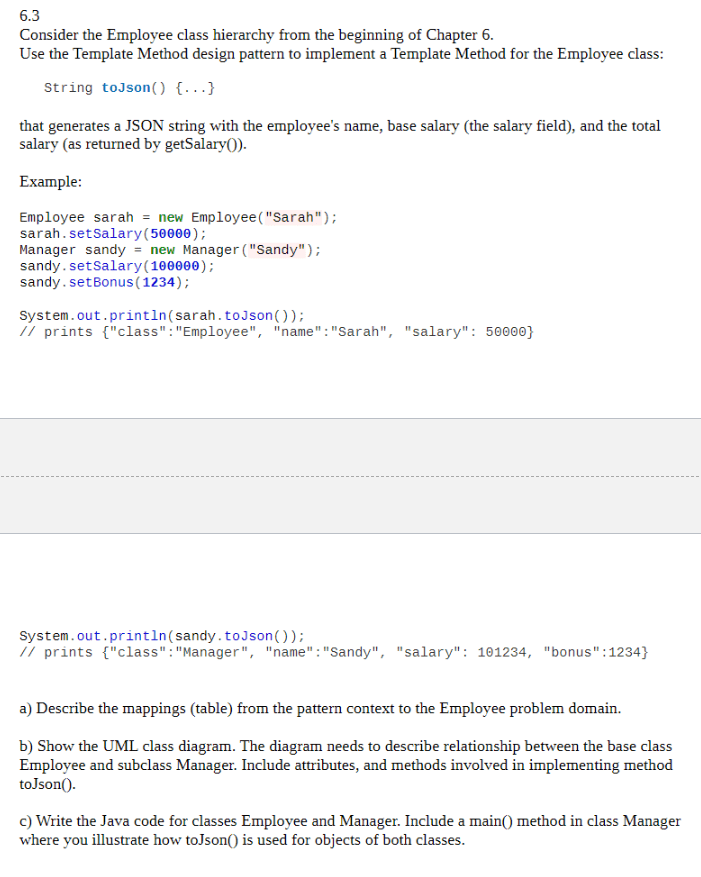
63 Consider the Employee class hierarchy from the beginning of Chapter 6 Use the Template Method
6.3 Consider the Employee class hierarchy from the beginning of Chapter 6. Use the Template Method design pattern to implement a Template Method for the Employee class: String toJson() {} that generates a JSON string with the employee’s name, base salary (the salary field), and the total salary (as returned by getSalary()). Example: Employee sarah = new Employee(“Sarah”); sarah.setSalary(50000); Manager sandy = new Manager(“Sandy”); sandy.setSalary(100000); sandy.setBonus(1234); System.out.print

 25% off with code “SUMMER”
25% off with code “SUMMER”
